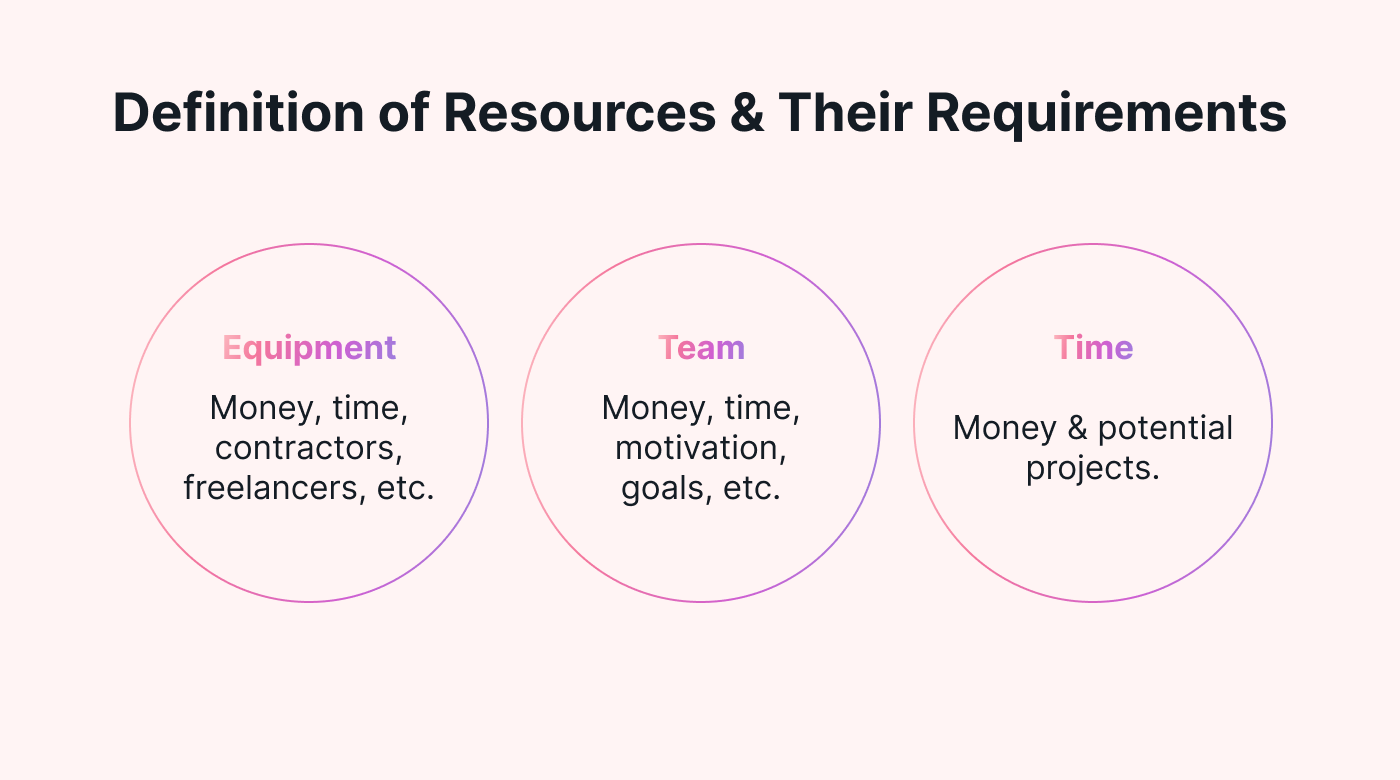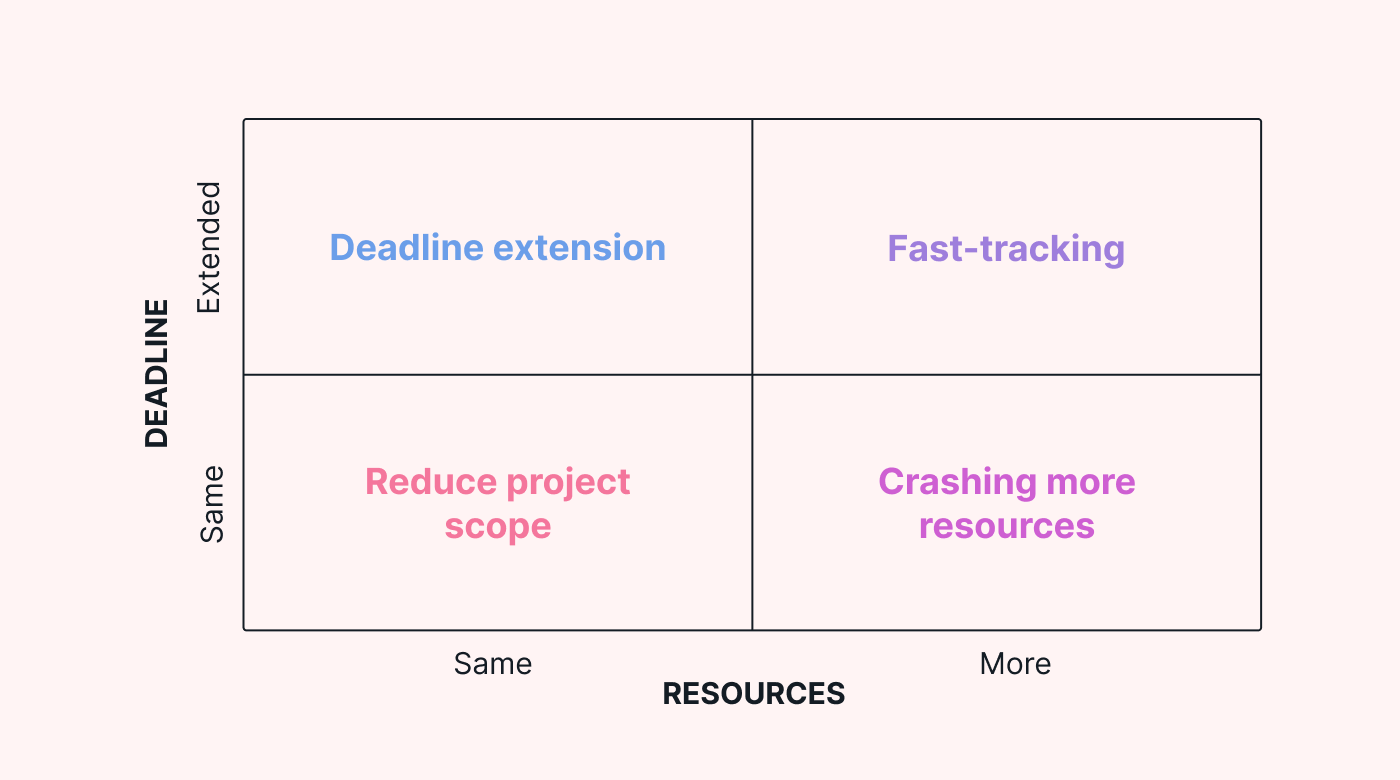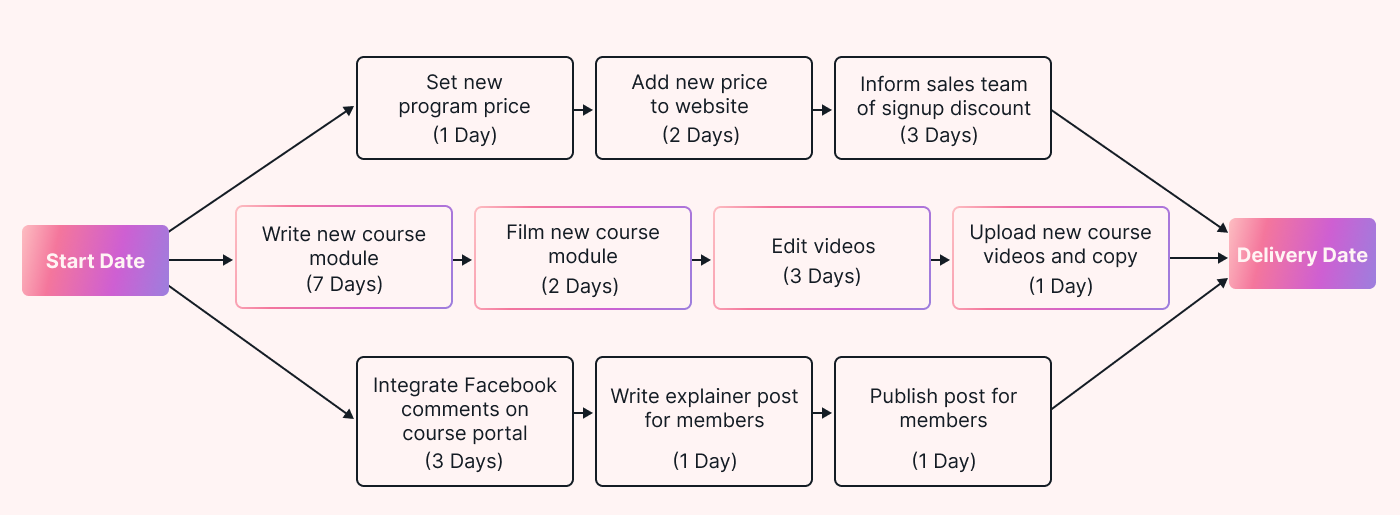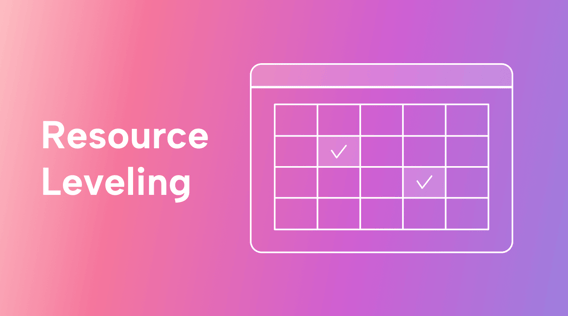Are you feeling overwhelmed by the never-ending task of balancing your limited resources? Then it’s time to look at some strategies for optimizing and simplifying your project schedule.
Resource leveling is essential for ensuring your resources work in tune with each other, and that workloads are balanced with task dependencies. Business productivity is critical, but delays and disruption can occur when resources are incorrectly or over-allocated, causing resource conflict.
This is where effective resource leveling can help you adjust the allocation of resources, increase efficiency, and reduce delays.
In this guide, we’ll walk you through resource-leveling techniques to make your project management more efficient.
What is resource leveling, and why is it important?
Resource leveling is a series of project management techniques that help you balance resource usage and workload. It enables you to analyze your project’s resources, create a resource plan, and check the project regularly to ensure you use your resources efficiently.
Leveling resources helps keep your project on track. It even allows project managers to prioritize which tasks to allocate, when, and how much time to spend on them.
Resource leveling aims to help you determine which tasks need more resources or more time when you are mid-project, and changes blow out your schedule.
The role of resource leveling in project management
When you are in the planning phase of a project, you will need to decide how to allocate and schedule your resources. Resource leveling plays two key roles when it comes to managing your projects. The first is that it can give you a more realistic idea of your schedule before your project starts by being aware of any resource constraints that will limit your production level.
Secondly, when your projects are underway, resource management techniques like resource smoothing can help you rebalance workloads that are blowing out. This is especially helpful if your project scope changes and your staff start to get overworked or have more work to do than time to do it.
What are the benefits of resource leveling?
This article aims to help you better manage your team so they can work smarter. This is just one of the benefits of using resource-leveling techniques in your business. Here are some other ways they can benefit your business:
Balancing your workload
Resource leveling makes sure that everyone on your team has a fair amount of work. This way, no one gets overloaded while others have nothing to do.
Optimizing your resource use
You can use resources wisely by figuring out which resources are in high demand and making sure they are allocated to the most important work. This saves time and money, making your business more efficient.
Reducing stress
Resolving conflicts and balancing workloads means less stress for you and your employees. A happier work environment leads to better productivity.
Making projects and revenue more predictable
Resource leveling helps you see potential problems early on, making your projects more predictable and manageable. This way, you can plan and avoid surprises. When you can rely on your project completion dates, you can confidently schedule more projects.
Increasing customer satisfaction
Happy client, happy life. Satisfied clients are more likely to return and recommend your services to others, boosting your business.
How to identify resource constraints
Before you can implement resource leveling techniques, you need to understand the resource constraints in your project. This will help you better understand your resources' limitations and plan accordingly to ensure your project is completed on time and within budget.
 |
Resource constraints can be things like staff availability, equipment, or budget. Identifying these early helps you plan so you can adjust. For example, if you have limited staff, you may need to change your timeline or outsource tasks to improve resource availability. As you plan your project, it’s also essential to plan your resources.
Steps to implement resource leveling
Getting your project done successfully means analyzing your project's resources, choosing the right tasks, and assigning resources appropriately. Here are the steps:
1. Analyze your project's resource demand and requirements
To level resources, start by analyzing your project’s resource requirements. This means looking at all the tasks that must be completed and identifying the resources required to finish them.
For example, if you’re working for a construction company, you’ll need to identify:
- the number of workers required for each task
- the types and quantities of equipment needed
- the materials required
Then analyze your project’s resource requirements to identify potential constraints or over-allocation issues.
 |
2. Prioritize your tasks and assign resources
The next step is to prioritize your tasks and assign resources. Of course, assigning resources with the right skills matters first. Then ensure that resources with these skills are allocated to the most critical tasks first.
For example, if you’re working on a software development project, you may need to prioritize developing critical features over less important ones. By assigning resources to critical tasks first, you’ll be able to ensure that your project stays on track and that you’re making progress toward your goals. Using a method such as the Critical Path Method (CPM) will help you determine essential tasks and visualize your task dependencies on a timeline from project kickoff to project completion.
3. Balance workloads and resolve conflicts
Next, balance workloads and resolve conflicts to ensure your project team members are not overworked and there are no conflicts between tasks.
For example, if two team members need the same equipment at the same time, you must decide which one to change or get more equipment.
4. Monitor and adjust resource allocation
Finally, check your project’s progress and adjust resources to succeed. This includes tracking how your team is doing and changing resource dependencies if necessary.
For example: If one team member always falls behind, you may need to adjust their workload or add resources to support them.
Follow these steps to implement resource leveling and finish your project on time and budget.
Real-world resource leveling strategies
Survey a group of project managers, and they’ll tell you that unexpected delays are common despite your best planning. Resource optimization techniques, such as resource smoothing, can help mitigate issues by providing more time and resources to work on a project and optimizing existing resources to keep to your project timelines.
These are the four main strategies in the resource leveling process:
 |
Reduce project scope: the same deadline with a reduced number of tasks
In this scenario, you might realize that some tasks can be delayed or pushed to another project when you review your project. These nice-to-haves aren’t critical to the project but still use additional resources. If you were building an online course, this could be a plugin that integrates social media comments. It might be nice to have, but it can be done later to prioritize the core tasks needed to complete the course by its original finish dates. This is where having a PERT chart or planning with the critical path method is helpful because you can visualize the critical tasks and decide what to eliminate or push to a later date.
 |
Crashing more resources to meet the same deadline
When there's a time constraint keeping you from finishing a project with existing resources, adding more people can be beneficial. By adding additional resources, teams can get through their workload faster without compromising the schedule. This is a resource smoothing technique that allows you to meet the same deadline. While this will increase the cost, it means the scope is untouched and the original project schedule can still be met.
Deadline extension: the same resources with an extended timeline
Using the same resources while extending the deadline with stakeholder approval is another option that can be used when there’s not enough time or budget for additional personnel or materials. This strategy requires careful planning and communication between stakeholders to ensure everyone is on board with any changes made to the timeline or budget.
Fast-tracking tasks on the critical path: the same resources with the same deadline
Reducing project scope and fast-tracking tasks on the critical path is an effective way of meeting deadlines without sacrificing quality. Given your resource limitations, this resource smoothing technique requires careful planning to identify which tasks can be completed concurrently. Fast-tracking shortens your project’s schedule by working paths together that may previously have been sequential so that you can keep the same delivery date.
For example, in website project management, rather than having the copywriters produce the copy, then having the graphic designers create the images, both teams would be working concurrently. The tasks are completed earlier, and the original deadline can be maintained. Fast-tracking is beneficial when you can overlap tasks without overscheduling your team.
Resource leveling strategies enable teams to deliver projects on time and within budget while using existing resources efficiently.
How Motion can help you with resource-leveling
Combining resource leveling with project management software helps you identify resource availability, assign tasks, and track progress. Combining your planning documents with a quality project management tool like Motion can also provide valuable insights into your performance against your overall project timeline. This helps you to make informed decisions about the number of tasks you have assigned and how well they are tracking against the project duration. If you need to do any resource smoothing, you’ll be able to see precisely where you need to make changes on a visual project board.
The key to effective resource leveling is a good understanding of the availability of each resource (e.g., how much time each project team member has available and when) and an estimated level of effort and time required to complete each task.
Motion can then automatically schedule your resources based on your priorities and their availability – one of many areas where Motion excels.
Try Motion free today!





